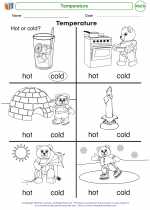Convection
Convection is the transfer of heat through the movement of a fluid, such as air or water. It occurs because when a fluid is heated, its particles gain energy and move more quickly, causing the fluid to expand and become less dense. This less dense, warmer fluid then rises, and as it does, cooler, denser fluid moves in to take its place. This creates a continuous cycle of rising warm fluid and sinking cool fluid, which transfers heat from one location to another.
Convection can be seen in many natural processes, such as the rising of warm air currents from the Earth's surface, the circulation of ocean currents, and the movement of magma beneath the Earth's crust. It also plays a significant role in weather patterns, as warm air rising and cool air sinking creates winds and contributes to the distribution of heat around the globe.
In everyday life, convection is often used for cooking, as in ovens and boiling water. It is also an important factor in heating and cooling systems, as warm air rises and cool air sinks, creating a natural circulation that helps distribute heat or coolness throughout a space.


